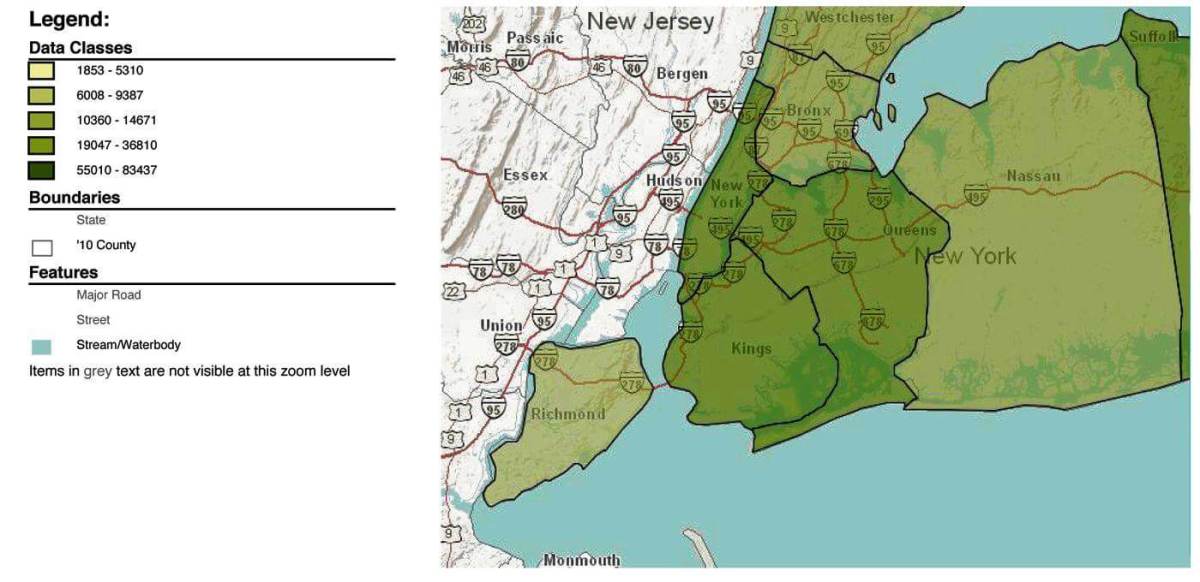By Ivan Pereira
U.S. Census figures show that southeast Queens’ population has shrunk over the last decade and community leaders say the housing crisis that devastated the neighborhood and the lack of outreach to make sure people were counted are the leading causes of the decline.
The preliminary count that was released Friday indicated southeast Queens lost nearly 7 percent of its population from 668,820 residents in 2000 to 621,690 last year. The borough as a whole had a slight increase in population since the last census, with 2,229,379 residents in 2000 compared to 2,230,722 in 2010, according to the U.S. Census.
Adjoa Gzifa, chairwoman of Community Board 12, which oversees Jamaica, Hollis, St. Albans, Springfield Gardens, Baisley Park, Rochdale Village and South Jamaica, questioned the accuracy of the statistics but noted that the area has gone through many changes over the last 10 years — the biggest being the rise in home foreclosures.
Communities including St. Albans, Springfield Gardens and Rosedale have led the state in the number of homes lost due to foreclosure, according to state data.
“We had a lot of people who lost their homes and where did they go? They went to other states where the rent is cheaper,” she said.
Many homeowners went into foreclosure after a surge of subprime loans were given to people who could not afford to pay off the mortgages once the interest rates increased.
The state Assembly district in southeast Queens with the largest drop in residents was District 33, which is represented by Assemblywoman Barbara Clark (D-Queens Village) and includes the communities of Queens Village and Cambria Heights and parts of Bellerose. In the last decade, those neighborhoods went from a population of 137,376 to 115,034 — a 16.26 percent decrease, according to Census data.
Clark said she did not think the foreclosure crisis had anything to do with the drop in numbers, which she attributed to her community being undercounted. The assemblywoman noted that a lot of homes in her district rent out basements to tenants and those residents might have not received census forms.
“We have a lot of empty houses, but the ones that are occupied are adding a lot of people to their households. I can see just by seeing the garbage cans that there are a lot of people who are living in the neighborhood,” she said.
Clark said she would join the mayor in his request that the U.S. Census Bureau should take another look at the city’s data. Her Assembly colleague William Scarborough (D-St. Albans) concurred.
Scarborough’s 29th Assembly District, which includes St. Albans, Rochdale Village and parts of Springfield Gardens, lost nearly 14,000 residents, or 10 percent, since the last census. The assemblyman said he believes there was not a strong enough push to get residents to fill out the census form and that the federal government did not do a thorough job in correctly counting residents.
Last April, the mayor’s office indicated that several communities in southeast Queens, including Laurelton, Springfield Gardens and St. Albans, had low response census rates. Many of the communities had rates lower than 50 percent, according to the mayor’s statistics.
Scarborough said he was worried that the weak census showing could negatively affect funding for the area.
“We’ll be shortchanged,” he said.
Reach reporter Ivan Pereira by e-mail at ipereira@cnglocal.com or by phone at 718-260-4546.































